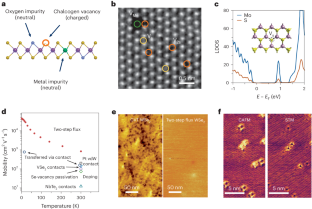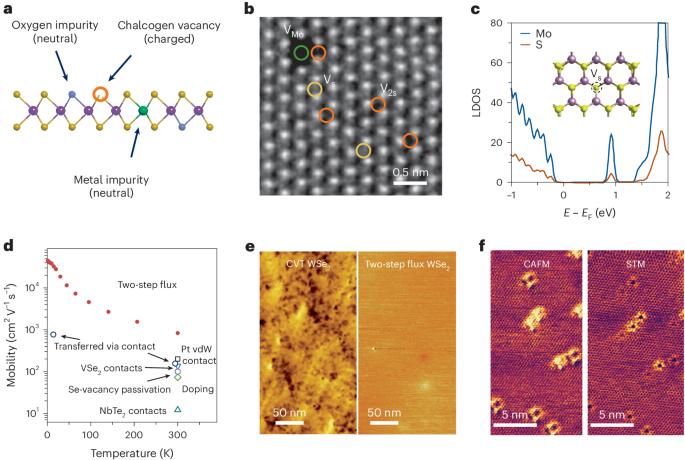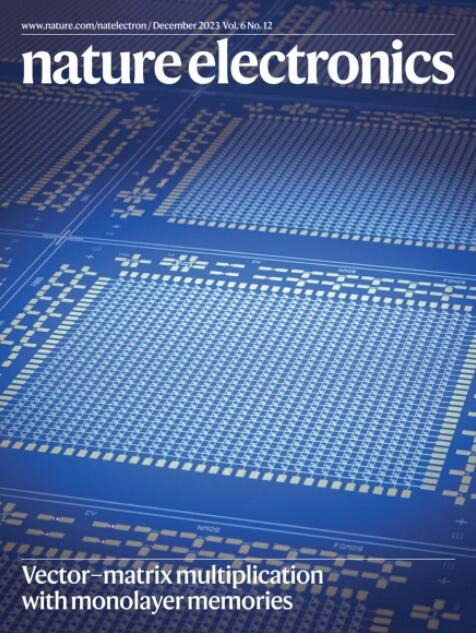Critical challenges in the development of electronics based on two-dimensional transition metal dichalcogenides
IF 33.7
1区 工程技术
Q1 ENGINEERING, ELECTRICAL & ELECTRONIC
引用次数: 0
Abstract
The development of high-performance electronic devices based on two-dimensional (2D) transition metal dichalcogenide semiconductors has recently advanced from one-off proof-of-principle demonstrations to more reproducible integrated devices. It has, in particular, reached a point where the material quality—as well as the interfaces between the metal contacts, dielectrics and 2D semiconductors—must be optimized to increase device performance. Here we examine the key immediate challenges for the development of electronics based on 2D transition metal dichalcogenides, and identify doping, p-type contacts and high-dielectric-constant dielectrics as critical issues. We argue that these challenges stem from the high density of defects present in 2D transition metal dichalcogenides, and suggest that the community focus more on the growth of high-quality materials with a low concentration of defects. We also provide recommendations on identifying industry-compatible dielectrics for these 2D devices. This Perspective explores key challenges in the development of electronics based on two-dimensional transition metal dichalcogenides, identifying defects, doping, p-type contacts and high-dielectric-constant dielectrics as critical issues.


开发基于二维过渡金属二粲化物的电子器件的关键挑战
基于二维(2D)过渡金属二掺杂半导体的高性能电子器件的开发,最近已从一次性的原理论证发展到更可重复的集成器件。尤其是在材料质量以及金属触点、电介质和二维半导体之间的界面方面,已经到了必须进行优化以提高器件性能的阶段。在此,我们探讨了开发基于二维过渡金属二钙化物的电子器件所面临的关键挑战,并将掺杂、p 型接触和高介电常数电介质确定为关键问题。我们认为,这些挑战源于二维过渡金属二钙化层中存在的高密度缺陷,并建议业界更多地关注缺陷浓度较低的高质量材料的生长。我们还就如何为这些二维器件确定行业兼容的电介质提出了建议。
本文章由计算机程序翻译,如有差异,请以英文原文为准。
求助全文
约1分钟内获得全文
求助全文
来源期刊

Nature Electronics
Engineering-Electrical and Electronic Engineering
CiteScore
47.50
自引率
2.30%
发文量
159
期刊介绍:
Nature Electronics is a comprehensive journal that publishes both fundamental and applied research in the field of electronics. It encompasses a wide range of topics, including the study of new phenomena and devices, the design and construction of electronic circuits, and the practical applications of electronics. In addition, the journal explores the commercial and industrial aspects of electronics research.
The primary focus of Nature Electronics is on the development of technology and its potential impact on society. The journal incorporates the contributions of scientists, engineers, and industry professionals, offering a platform for their research findings. Moreover, Nature Electronics provides insightful commentary, thorough reviews, and analysis of the key issues that shape the field, as well as the technologies that are reshaping society.
Like all journals within the prestigious Nature brand, Nature Electronics upholds the highest standards of quality. It maintains a dedicated team of professional editors and follows a fair and rigorous peer-review process. The journal also ensures impeccable copy-editing and production, enabling swift publication. Additionally, Nature Electronics prides itself on its editorial independence, ensuring unbiased and impartial reporting.
In summary, Nature Electronics is a leading journal that publishes cutting-edge research in electronics. With its multidisciplinary approach and commitment to excellence, the journal serves as a valuable resource for scientists, engineers, and industry professionals seeking to stay at the forefront of advancements in the field.
 求助内容:
求助内容: 应助结果提醒方式:
应助结果提醒方式:


